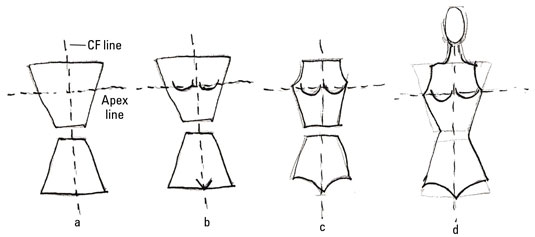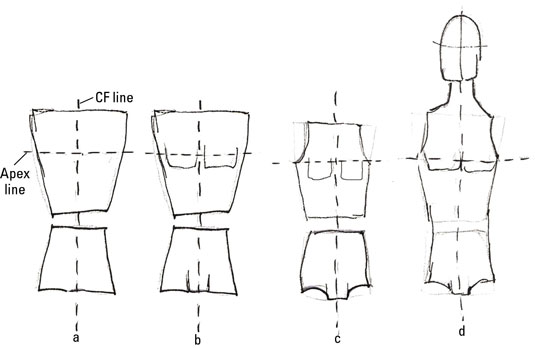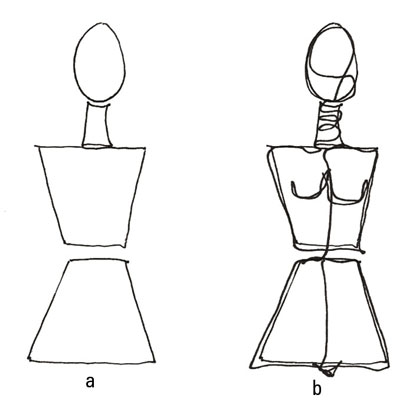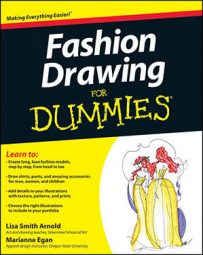Eyeball the proper widths and lengths to get the torso right. And remember that fashion illustration is all about exaggeration, so don’t be afraid to lengthen your torso.
Here are the steps for drawing a female torso:-
Start by drawing two trapezoids that represent the female figure and then mark the center line and apex line.
-
Draw a small V shape for the crotch at the bottom of the lower trapezoid. Add arcs to represent the breasts in the upper trapezoid.
The apex line falls halfway through the breast.
-
Cut into the top of the upper trapezoid’s corners for armholes, making sure they end around the apex line.
-
Cut into the bottom corners of the lower trapezoid with downward arcs to make the leg holes.
-
Join the two trapezoids where they meet near the middle of the torso to form the waist. Finish with a long, narrow neck and an oval head.

-
Start by drawing your two trapezoids and then mark the center front line and apex line.
The upper trapezoid is taller than the lower, and the shoulders are wider than the hips. The waist is not that much smaller than the hips.
-
For the crotch, draw two sides and the bottom of a small square in the lower trapezoid. Using the apex line as a guide, add some squared off pecs to the upper trapezoid.
The apex line falls about a third of the way though the pecs.
-
Cut curved lines into the top of the upper trapezoid’s corners for armholes.
The armhole line should end around the apex line.
-
Cut into the bottom corners of the lower trapezoid with downward curved arcs to make the leg holes.
-
Connect the two trapezoids where they meet to shape the waist. Sketch in a wide neck and a head with a square jaw to clearly indicate that you’ve drawn a guy.

Produce a fashionably fluid torso with gesture drawing
In fashion illustration, a few good lines can go a long way toward creating a dynamic torso. However, consider what you can do with just one good line. Try drawing the torso with flair by using a technique called gesture drawing, the art of drawing quickly to capture the essence of something rather than to immortalize every detail.So, you draw the torso (and eventually the fashion figure) using only one line, not ever lifting the pencil from the paper. Because gesture drawing includes only the essential elements, it gives more of a sense of motion.
Here are the advantages of gesture drawing:
-
It forces the artist to loosen up and gives the drawing an organic look.
-
It leads to a more fluid line, which is critical in fashion illustration.
-
You can use it for getting an idea down on paper and refine it later.
You must draw quickly when doing gesture drawing. Don’t overthink it! Otherwise, you lose the organic feel of the drawing. Getting out of the habit of erasing every little line that’s out of place takes patience and practice, so stick with it.
Try this gesture drawing exercise:-
Start with your basic trapezoids and an oval to create a torso and head.
-
Put your pencil at any point on a trapezoid. Without lifting your pencil point from the paper, draw a line moving any direction that outlines the body and head.
Overlapping lines is okay. The next time you do this exercise, skip Step 1 and start gesture drawing the body with a single line.


